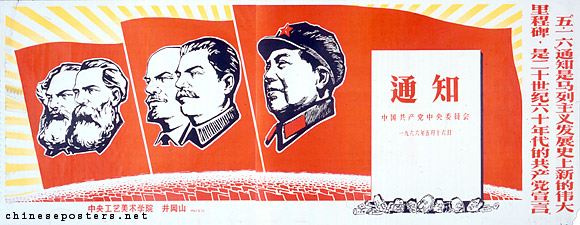Symbolism 🧵:
I understand why the consensus "Heads of Communism" ends with Mao, but ending it there feels incomplete. Five is an ugly and undialectical number.
Either remove Stalin and Mao to make it three heads (which I hate) or add Deng to make it six heads (what I prefer).
I understand why the consensus "Heads of Communism" ends with Mao, but ending it there feels incomplete. Five is an ugly and undialectical number.
Either remove Stalin and Mao to make it three heads (which I hate) or add Deng to make it six heads (what I prefer).

Five is an undialectical number because the Hegelian dialectic has a triune structure (sublated unity of opposites, three in one).
Limiting the Heads to Marx/Engels/Lenin makes sense because Lenin "sublated" the revolutionary science of Marx/Engels into a revolutionary state.
Limiting the Heads to Marx/Engels/Lenin makes sense because Lenin "sublated" the revolutionary science of Marx/Engels into a revolutionary state.
I prefer the idea of adding Deng to the Heads though, because it creates three dialectical pairs (somewhat visualized below) that better signify the fractal unity and development of DiaMat and HistMat.
Marx/Engels/IWA
⬇️
Lenin/Stalin/USSR
⬇️
Mao/Deng/PRC
Marx/Engels/IWA
⬇️
Lenin/Stalin/USSR
⬇️
Mao/Deng/PRC

Each pair within the six Heads also signifies the unity of theory and practice and their sublation into revolutionary praxis—Marx/Lenin/Mao symbolizing theory, Engels/Stalin/Deng symbolizing practice, and the unified pairs each symbolizing their revolutionary praxis/projects.
With all that said, the best argument for leaving it at five heads is related to Badiou's view that Mao introduced "infinity" to Marxism.
In more concrete terms, MZT is modular in a way that dogmatized Soviet MLism wasn't. It's adaptable to all conditions across space and time.
In more concrete terms, MZT is modular in a way that dogmatized Soviet MLism wasn't. It's adaptable to all conditions across space and time.
Just look at the theoretical system of the CPC. Every new Paramount Leader introduces their own theoretical outlook based on the lineage of MZT, setting goals in response to China's changing conditions.
MZT
⬇️
DXT
⬇️
Three Represents
⬇️
Scientific Outlook on Development
⬇️
XJT
MZT
⬇️
DXT
⬇️
Three Represents
⬇️
Scientific Outlook on Development
⬇️
XJT
In contrast, the post-Stalin USSR lost its theoretical adaptability, which would eventually translate into the systemic paralysis that doomed the Soviet project.
It's no coincidence that the De-Stalinized CPSU preferred the symbolism of the Three Heads of Communism!
It's no coincidence that the De-Stalinized CPSU preferred the symbolism of the Three Heads of Communism!

I guess the lesson of this free association thread is that symbols are important and need careful consideration.
Contrary to the dualistic views of vulgar materialism, symbols (and ideas generally) retain an essential materiality from their real social and physical antecedents.
Contrary to the dualistic views of vulgar materialism, symbols (and ideas generally) retain an essential materiality from their real social and physical antecedents.
Symbols are not mystical veils for a material substance—they are living expressions of an essential content, windows into the dialectical-material.
The material is not found by ignoring the symbolic; it's seen through sensuous/immanent critique of the social/physical/symbolic.
The material is not found by ignoring the symbolic; it's seen through sensuous/immanent critique of the social/physical/symbolic.
• • •
Missing some Tweet in this thread? You can try to
force a refresh


















